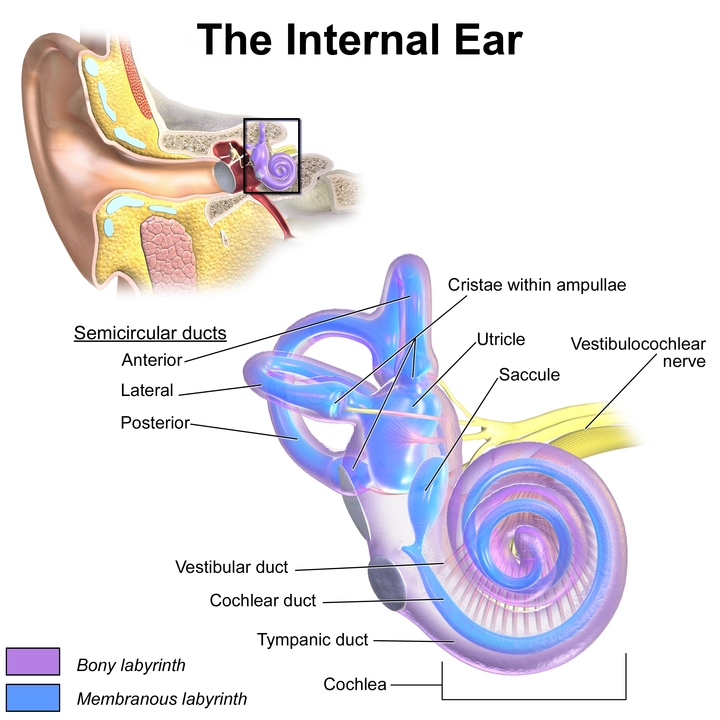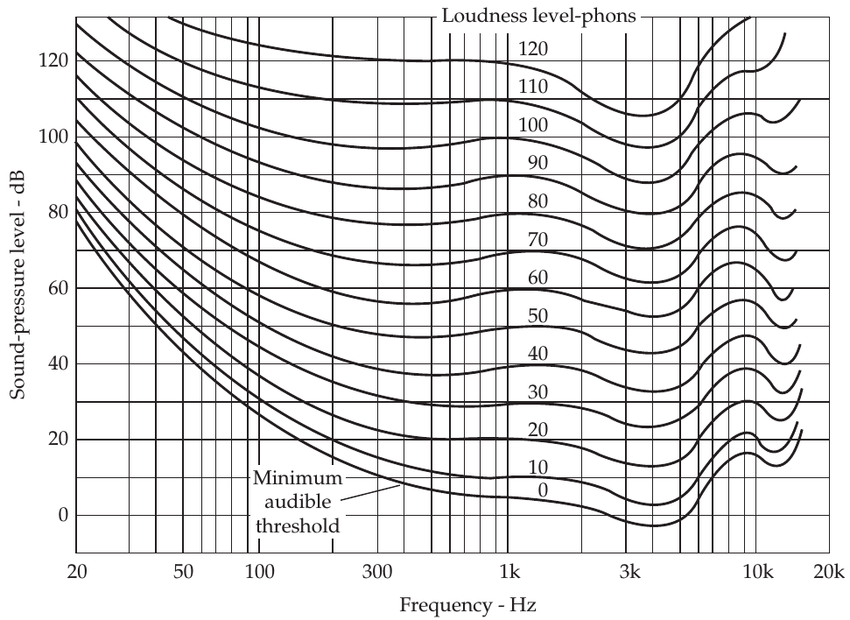11 Speech perception
This lecture was recorded.
During the course we almost completely was focused on a Acoustic Phonetics ignoring Articulatory and Auditory Phonetics. Auditory phonetics focuses on
- hearing of speech signals;
- perception of speech signals.
11.1 Hearing
During the hearing acoustic waves are transformed into nerve impulses that are perceived by the brain. This process is described in this Wikipedia video.

Picture 11.1: Blausen.com staff (2014). “Medical gallery of Blausen Medical 2014”. WikiJournal of Medicine 1 (2). DOI:10.15347/wjm/2014.010. ISSN 2002-4436
The peripheral auditory system
- translates acoustic signals into neural signals;
- performs amplitude compression;
- performs a kind of Fourier analysis.
11.2 Perception of speech signals
There is no one to one connections between physical properties of sounds and their auditory sensations. However during the experiments we can reveal how they are connected:
- amplitude or intensity — loudness;
- fundamental frequency — pitch;
- spectral structure — sound quality;
- duration – length.
11.2.1 Psychoacoustic scales
An equal-loudness contour (H. Fletcher and Munson 1933) is a measure of sound pressure level, over the frequency spectrum, for which a listener perceives a constant loudness when presented with pure steady tones.

Picture 11.2: Manoochehr Darvish, 2015, DOI:10.14279/depositonce-4409
Loudness historically was described with sone and phone scales, but the most popular now is A-weighting:

The same idea for perception of frequency if proposed in Bark scales:

11.2.2 Perception
People use a lot of different things in order to decode what have been said:
- context;
- knowledge of linguistic units (Ganong effect, (Ganong 1980)); and their frequency?..
- visual signal: McGurk Effect.